Prevent frozen pipes and drains from causing catastrophic damage to your property and plumbing system. Knowing how to thaw your pipes and drains when they freeze will help you avoid burst pipes and costly repairs.
homeandgardeningguide.com assembled helpful information and genius tips to help you safely unfreeze your frozen drains and pipes.
How to Unfreeze a Drainpipe
In most cases, you can unfreeze a frozen drainpipe by pouring hot water down it. Fill a pot with a half-gallon of water, and heat it on the stove. When it begins to boil, carefully remove it from the stove and slowly pour it down the drain. This may be enough to thaw the ice and completely clear your drain. Once the drain starts flowing, open the faucet and run warm water for 4 to 5 minutes to ensure the drain is completely clear.
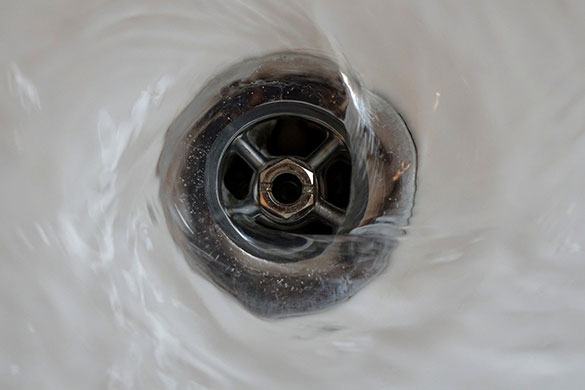
How to Safely Thaw Frozen Drain Pipes
Drains are less likely to freeze than water supply lines. Still, it does happen when those drains are located in an enclosure or cabinet against an exterior wall. When a drain freezes, the following tips will help you get your drain flowing again:
Table Salt – Salt (NaCl) reacts with water by lowering its freezing point. Use one of the following methods:
- Pour it down the drain and let it sit (will take some time to work)
- Dissolve a half-cup of salt into a half-gallon of hot water and pour it down the drain (works faster than pouring the salt directly into the drain)
Turn Up the Heat – Increase the temperature on your thermostat and open the cabinet doors to let the flow of warm air contact the pipes. This method may take a couple hours to work, but it is among the safest ways to thaw out your frozen drains.
Space Heater – Open the cabinet door and place a space heater in the frozen pipe’s direction. Do not place the heater in the cabinet or enclosed space (even with the doors open). This may cause the heater or surrounding material to super-heat and become a fire hazard.
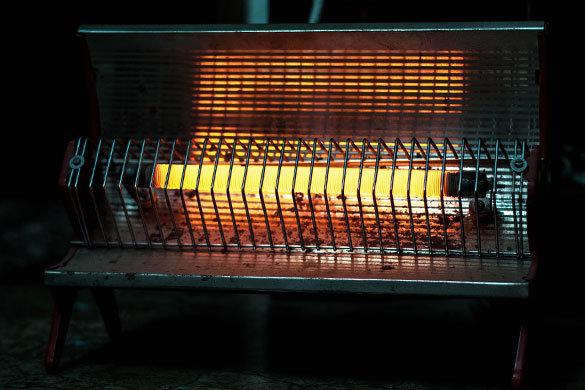
Heat Lamp – The same heat lamps used in terrariums or indoor plant cultivation can be used to thaw your drain pipes. Aim the light at your pipes and wait (keep the light at a safe distance from the pipe and keep the cabinet doors open).
Electric Heat Tape – This “tape” is a ribbon type wrapping with heating elements. It can be wrapped around frozen pipes and slowly warmed up using a thermostat.
Hair/Blowdryer – Gently warm the pipes with a hairdryer until the ice has melted enough to let water through. Then, open the faucet and let a stream of warm/hot water finish melting the ice.
Heating Pad/Hot Packs – If you have a heating pad or hot packs (hand/foot warmers), wedge it in the P or S trap, on a medium setting, until water starts flowing. Then, open the faucet and let warm water flow into the drain for 4 to 5 minutes, clearing the rest of the drain.
Hot Towel – Wrap the pipe in a towel soaked in hot water and wrung out. The warmth from the towel will slowly melt the ice within the pipe; repeat as needed. As with other methods, once water begins to flow, let a stream of warm water flow down the drain for 4 to 5 minutes.
Note: Avoid applying high heat or open flames to your pipes. Besides damaging your pipes, you risk causing a flood when the pipe melts or breaks a weld, or worse, you could start a house fire.
Tip: As colder weather approaches, keep several gallons of bottled or filtered water stored away. If your drains are being affected, your water supply lines may likely freeze up too.
If the above methods fail to return your drains to a normal flow, call a plumber to help you, as your pipes may be frozen far beyond what they appear to be.
Unfreeze a Shower Drain Using Simple Chemistry
Shower or floor drains present a different challenge. Since you will not likely have access to the pipes beneath, you’ll have to work from the drain itself. The following steps will help you use simple chemistry to thaw your shower or floor drain:
- Boil at least 2 gallons of water with 1 cup of table salt
- Put a half-cup of baking soda down the drain
- Pour 1 cup of vinegar in the drain with the baking soda
- Let the vinegar and baking soda react together until they stop fizzing (this will clean residues from the drain and pipe)
- Pour the boiling salt water down the drain to melt the ice, clearing the blockage
- Open the faucet and let hot water run down the drain for 4 to 5 minutes
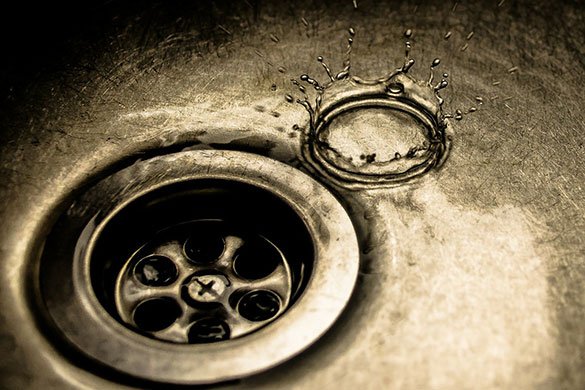
Tip: Once you have cleared a shower or floor drain, allow a trickle/stream of warm water to flow through the drain when the temperature outside is expected to drop below 32°F. This will prevent the drain from freezing up again.
How to Safely Thaw Water Pipes
Frozen water pipes can present multiple problems during colder weather. They can burst without you knowing it, thawing them too fast can create cracks or fissures, and when they freeze, you can’t get water. The following will help you safely thaw out your water pipes:
Find the Frozen Pipe – Once you detect a freeze in your water line, you must act quickly to locate the frozen portion of the pipe and thaw it before the internal pressure ruptures it. The following will help you find a section of frozen water pipe:
- Open faucets throughout the house to see which section is blocked.
- Trace suspected pipes back to the main supply line looking for exposed or uninsulated sections of pipe.
- If you have access to an infrared temperature reader (thermometer), you will notice an extreme drop in temperature when coming across a frozen portion of the pipe.
Note: Unprotected pipes located in exterior walls, a basement, or an attic are prone to freezing unless properly insulated or shielded from freezing temperatures.
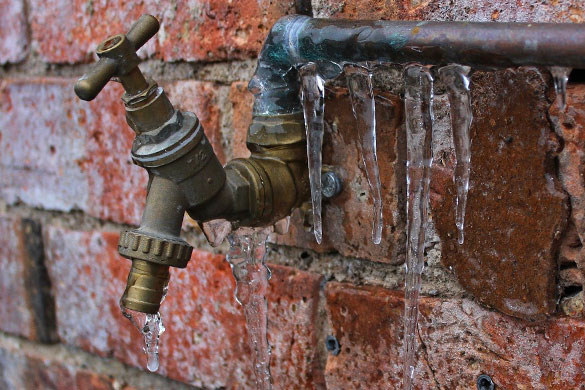
Locate the Frozen Section of Your Water Main – If no water is coming from any faucet or spigot in your home, your main water line (the connection from the street to your home) is likely frozen. Since water mains are typically buried and enter your home underground, it is rare to see them freeze. Check the following to find the frozen portion of your water main:
- Check the section of pipe running from your meter to the entrance point of your home (unless it is buried)
- Check the portion of pipe from the entry point to your home and where it splits (disburses) to the rest of the home
Tip: A reliable sign that a pipe has frozen is the development of frost on the frozen pipe’s exterior.
Thawing Frozen Water Pipes – In the same manner you would thaw a sink drain, the following methods can be used to thaw your water pipes:
- Turn Up the Heat – Increase the temperature on your thermostat and direct the warmer air to the area where your water main is located.
- Space Heater – Place a space heater in the direction of the frozen water pipe.
- Heat Lamp – Aim the light at your pipe and wait (keep the light at a safe distance from the pipe).
- Electric Heat Tape – Wrap this tape around the frozen pipe and slowly warm it up using the tape’s thermostat.
- Hair/Blowdryer – Gently warm the pipe with a hairdryer until the ice has melted enough to let water through. Then, open multiple faucets (for a minimum of 4 to 5 minutes), allowing flowing water to melt the rest of the ice.
- Heating Pad/Hot Packs – Wrap the pipe in a heating pad or hot packs (hand/foot warmers) on a low or medium setting until water starts flowing. Then, open multiple faucets to clear the rest of the ice from your plumbing system.
- Hot Towel – Wrap the pipe in a towel soaked in hot water and wrung out. The warmth from the towel will slowly melt the ice within the pipe; repeat as needed. As with other methods, once water begins to flow, let water flow for 4 to 5 minutes.
Note: For all types of pipe (stainless steel, copper, PVC, or PEX), the temperature should be increased slowly to prevent cracks, fissures, and potential bursts.
Watch this video to see how to thaw water pipes and prevent freezing
Prevent Water Pipes and Drains from Freezing
Better than thawing frozen pipes is preventing them from freezing. The following will help you protect your pipes from freezing temperatures and damage:
- When freezing temperatures are expected, slightly open a faucet or two, leaving a slow and steady stream of water flowing.
- Leave cabinet doors open to allow warm air in (for cabinets on exterior walls).
- Insulate exposed pipes in the attic, crawl space, garage, basement, or exterior of your home.
- Install pipe sleeves, heat tape, or heat cable on exposed water pipes.
- Wrap exposed pipes in newspaper for short-term protection.
- Seal any gaps in insulation or trim that allow cold air into your home.
- When traveling, leave your heating system on with your thermostat set between 55° and 60°F.
- Disconnect outside/garden hoses, shut off, and drain pipes leading outside.
Tip: Many of the products mentioned above are available at local building supply retailers.
Detecting a Ruptured Water Line or Drain
After freezing weather, you may have a ruptured water line or drain to contend with. The following are signs that you need to take immediate action:
- Unexplained pooling of water in your home after showers, dishwasher use, or sink use
- Water/Wet marks on your wall
- Hissing or trickling sounds from your walls
- A decrease in water pressure from your faucets
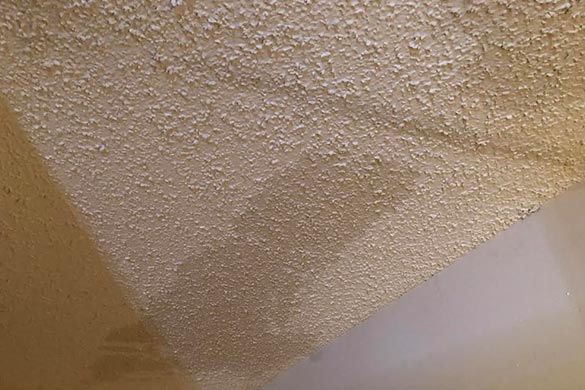
To detect a leak in your home:
- Turn off all faucets and shut down all water-based appliances
- Take an initial reading of your water meter
- Wait 1 hour (keeping all water usage at zero)
- Reread your meter (if there is no movement, you do not have leaks)
If you detect water usage (with all of your water system/plumbing shut off), chances are you have a leak. Read more about finding and fixing water leaks at homeandgardeningguide.com/repairs/plumbing/how-to-find-where-a-leak-is-coming-from/
Thawing Frozen Pipes and Drains
In this article, you discovered information and tips on how to unfreeze or thaw frozen drain pipes and water lines.
By taking action to thaw frozen drains and water lines, you are protecting the integrity of your plumbing system and preventing catastrophic water damages to your home.
When you leave frozen pipes to thaw on their own, you risk pipes bursting from built-up ice pressure. These ruptures can result in costly and time-consuming repairs.
Sources:
redcross.org/get-help/how-to-prepare-for-emergencies/types-of-emergencies/winter-storm/frozen-pipes.html
blogs.extension.iastate.edu/answerline/2018/01/11/cold-weather-and-frozen-pipes/
texashelp.tamu.edu/wp-content/uploads/2016/02/winter-storms-frozen-pipes.pdf
maine.gov/mema/maine-prepares/home-preparedness/preventing-thawing-frozen-pipes
Visit https://www.homeandgardeningguide.com/repairs/plumbing/ for more plumbing articles, resources, and tips.